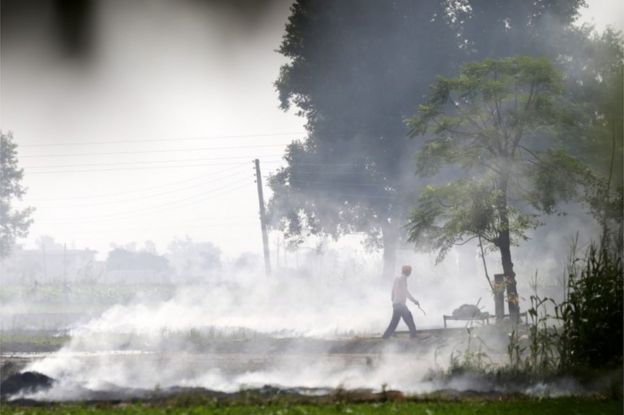This cycle of air pollution began in the 1960's and 70's with the green revolution, "an evolution of farming operations, government policy, and changing labor markets" writes Soutik Biswas. The green revolution was necessary to stop widespread famines that plagued the country, successfully increasing rice and wheat production. The northern states of Punjab and Haryana turned into "breadbaskets" for the country where they sow and harvest "wheat in the winter and rice to coincide with the monsoon season in July and August." Unfortunately, in order to clear the stubble that is left behind after the crops are harvested, "over two million farmers burn the 23 million tons of crop residue on the same 80,000 sq. km of farmland in northern India" at the same time. This burning releases particular matter, carbon dioxide, nitrogen dioxide, and Sulphur dioxide creating a potentially deadly cloud of smog over Delhi.
 The only solution that has been proposed by the government is the use of happy seeders and super straw management systems, both are devices that help remove stubble, but they are too expensive for many farmers to use.
The only solution that has been proposed by the government is the use of happy seeders and super straw management systems, both are devices that help remove stubble, but they are too expensive for many farmers to use.https://www.bbc.com/news/world-asia-india-45890916
No comments:
Post a Comment